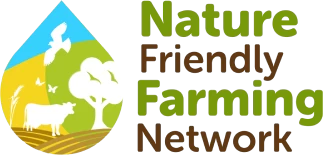A Whole Farm Approach
Alongside the drive to meet net zero, recognition is growing that a holistic approach to farm management is equally as necessary in providing adequate adaptation to a warming climate.
When efforts to decarbonise are valued alongside other measures that work with nature instead of against it, farms can improve the fertility and quality of their natural resources to the benefit of both climate mitigation and the farm business.
As we move closer to achieving net zero and reinstating the balance between what we sequester and emit, we must avoid any actions where carbon savings could result in perverse outcomes for nature, wildlife and the environment.
Things all farmers can do to begin acting on climate change
Create a whole farm plan. Look at existing opportunities and constraints for your land and
the surrounding land
Create a whole-farm plan which looks to the future and factors in potential changes coming from climate change (e.g. drought, flooding, rising temperatures, pests and disease) and which seeks to work with farmers, foresters and land managers in the surrounding landscape
Work towards your Maximum Sustainable Output. Use the work of the NFFN and Nethergill Associates and consider getting advice from a trusted advisor to support you in reviewing your MSO, considering how profitability could be linked to your partnership with nature
Review your farming systems and find the best approaches within your own system. You may want to consider step changes or a whole system change, e.g. pasture-fed livestock, agroforestry, organic, paludiculture or agroecology
Consider undertaking a farm carbon audit to identify the carbon capture components and sources of emissions on your farm. There are a variety of carbon calculators which can help with this.
The Centre for Innovation Excellence in Livestock (CIEL) highlights the importance of being able to measure and monitor emissions and mitigations. It compares different carbon accounting and reporting tools, including AgRE Calc, Cool Farm Tool and Farm Carbon Calculator, among others.
It found that whilst there are strengths in each tool, there are common knowledge gaps, including a lack of representation for embedded emissions and robust quantification of carbon sequestration. It is worth doing your research to find a calculator tool which can best meet the needs of your business.
Fertiliser Use
Create a nutrient management plan to identify how to minimise artificial fertiliser application
Lock nitrogen (N) into the soil by using catch and cover crops and prevent the loss of fertile topsoil and nutrients
Plant species that require less N fertiliser or will ‘fix’ N into the soil, e.g. legumes such as clover, vetches, trefoil, sainfoin or lucerne
Use organic manures and slurries instead of synthetic N fertiliser
Review your domestic regulations on storage and use of organic manures, slurries and synthetic fertilisers
Review stocking rates to match the natural carrying capacity of the land
Consider precision technology for a highly targeted method of application
Benefits
Less vulnerable to market forces, e.g. current high price of N fertiliser
Soil fertility improves with less N fertiliser
Reduce the need for pesticides: N fertiliser fosters fungal diseases and weeds – which need pesticidesImproved biodiversity and water quality
Improved profitability and reduction in variable costs
Improved water and air quality with a reduction in run-off
Reduction of emissions
Crop Management
Use catch and cover crops to reduce nitrate leaching, reduce soil erosion risk, improve soil structure and provide an N source to the following crop
Consider introducing spring cropping, or the use of fallows
Cultivate land in spring, not autumn, for spring cropping to avoid stimulating the mineralisation of N from organic matter when there is little N uptake by the subsequent crop, resulting in increased nitrate (NO3) leaching
Increase diversity and duration into your crop rotations by introducing legumes in arable rotations and grass leys and livestock onto arable farms
Minimise tillage where possible
Benefits
Funding may be available via government incentive schemes for catch and cover crops and the environmental benefits they provide
Crop rotations help to prevent disease and pest outbreaks in annual crops
Complying with regulations on soil erosion, leaching and runoff
Improved biodiversity, soil health and weed management through livestock grazing
Reduces reliance on synthetic fertilisers with a reduction in cost


